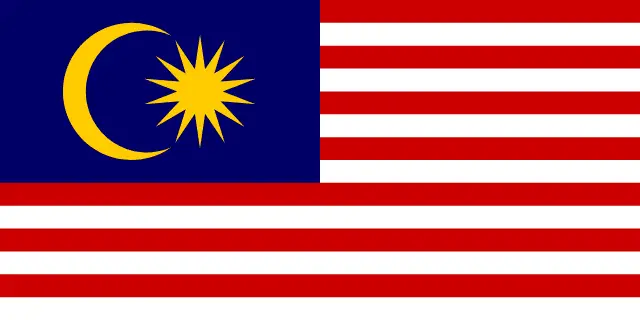Country Information
| Sovereign State | Yes |
| Country Codes | PH, PHL, 608 |
| Official Name | Republic of the Philippines |
| Continent | Asia |
| Capital | Manila |
| Government Type | Unitary Presidential Constitutional Republic |
| Currency | Philippine Peso (PHP) |
| Calling Code | +63 |
| Member Of | United Nations, Association of Southeast Asian Nations, World Trade Organization, Asia-Pacific Economic Cooperation |
| Population | Approximately 110 million |
| Total Area | 300,000 km² |
| Highest Point | Mount Apo (2,954 meters, 9,692 feet) |
| Lowest Point | Philippine Sea and South China Sea (0 meters, 0 feet) |
| GDP Per Capita | USD 3,430 |
| Life Expectancy | 71 years |
| Internet TLD | .ph |
Philippines National Anthem
Lupang Hinirang (Chosen Land)
Land of the morning,
Child of the sun returning,
With fervor burning,
Thee do our souls adore.
Flags of Neighboring Countries




History of the Philippines Flag
The national flag of the Philippines, known as the “Three Stars and a Sun” flag, was officially adopted on June 12, 1898, during the proclamation of Philippine independence from Spanish rule. The flag was conceptualized by Emilio Aguinaldo, the first President of the Philippines.
The flag features a horizontal bicolor with equal bands of royal blue and scarlet red, and a white equilateral triangle at the hoist. In the center of the triangle is a golden sun with eight primary rays, each containing three individual rays, and at each vertex of the triangle, a five-pointed star is situated. The eight primary rays of the sun symbolize the eight provinces that initially rebelled against Spanish rule, while the three stars represent the three major geographical areas of the Philippines: Luzon, Visayas, and Mindanao.
One unique feature of the Philippine flag is its usage to denote a state of war. When the flag is displayed with the red side on top, it signals that the country is in a state of war. In times of peace, the blue side is displayed on top.
Over the years, the flag has undergone slight modifications, particularly in the shade of blue used, but its essential elements have remained constant. The flag of the Philippines is steeped in history and symbolism, representing the country’s struggle for independence, the unity of its major islands, and the democratic principles it stands for. The flag is a source of pride and patriotism for Filipinos and is prominently displayed nationwide, especially during national and cultural celebrations.

